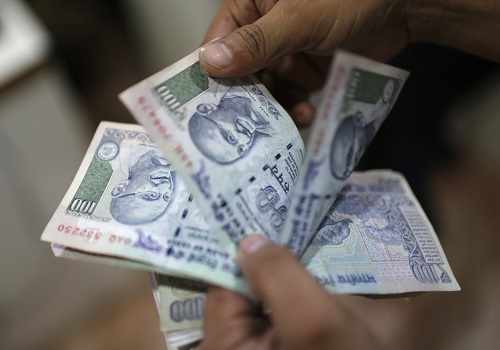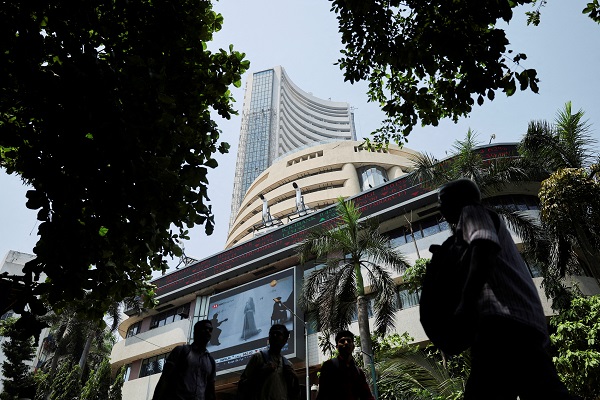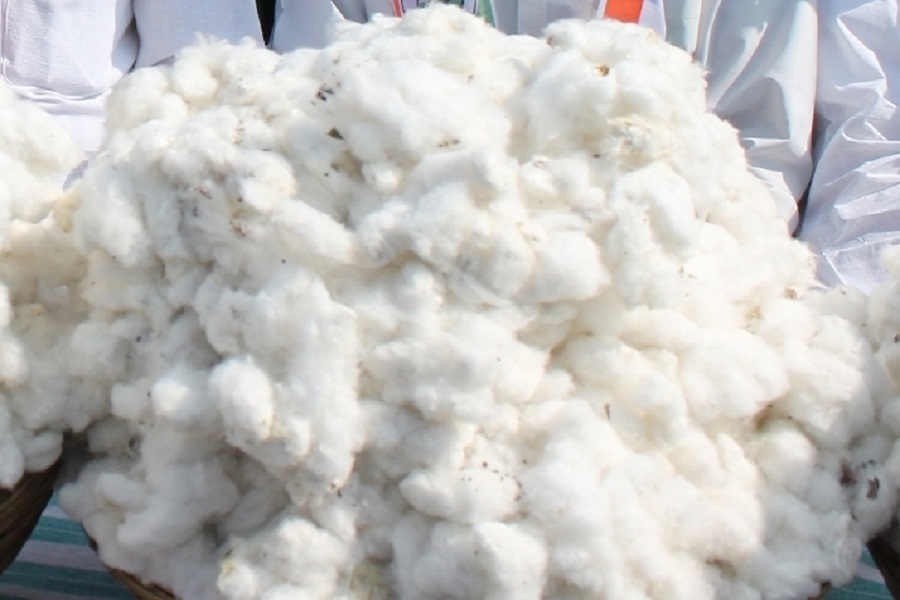Jeera trading range for the day is 19870-20970 - Kedia Advisory

Gold
Gold rose 0.53% to settle at Rs.84,888, supported by rising U.S.-China trade tensions and weaker U.S. job data. The U.S. added 143,000 jobs in January, falling short of the 170,000 expected, while the unemployment rate stood at 4%, slightly below the anticipated 4.1%. China’s central bank increased gold reserves for a third consecutive month, holding 73.45 million fine troy ounces by the end of January. Meanwhile, gold holdings in London vaults fell 1.7% to 8,535 metric tons, as shipments to the U.S. surged due to high futures premiums. U.S. gold futures are trading at an unusual premium over spot prices, driving significant deliveries to COMEX inventories, which have surged 93% since November. This has led to increased shipments from London, Switzerland, and Asian hubs. In India, high gold prices have weakened demand, with local dealers offering a $31 per ounce discount, down from last week’s $35 discount. China’s demand remained subdued post-Lunar New Year, with gold trading at a $7-$10 per ounce discount. The World Gold Council (WGC) reported an 11% drop in gold jewellery demand in 2024 and expects further weakness due to record-high prices. India’s gold consumption for 2025 is projected to decline from last year’s nine-year peak of 802.8 tons, though investment demand remains strong, with increasing interest in gold ETFs, digital gold, and bars. Technically, the market is under fresh buying, with open interest rising 2.13% to 17,490 contracts. Support is at Rs.84,450, with a break below testing Rs.84,020. Resistance is at Rs.85,295, and a move above could push prices toward Rs.85,710.
Trading Ideas:
* Gold trading range for the day is 84020-85710.
* Gold rose amid escalating trade tensions between the U.S. and China.
* A Labor Department report showed the U.S. economy added 143,000 jobs in January.
* Gold reserves in London vaults drop 1.7% in January m/m, says LBMA
Silver
Silver fell 0.27% to settle at Rs.95,333, pressured by a stronger U.S. dollar, which gained as President Trump threatened new tariffs on countries imposing trade levies on the U.S. Despite strong U.S. labor data, markets remained focused on multiple expected rate cuts from the Federal Reserve, ECB, BoE, RBI, and BoC, keeping monetary policy tilted toward easing. The U.S. ISM Manufacturing PMI unexpectedly rebounded, supporting silver’s long-term demand outlook due to its use in electrification technologies. On the supply side, the Silver Institute projected a market deficit for the fifth consecutive year in 2025, driven by strong industrial demand and retail investment, offsetting weaker jewelry and silverware consumption. Silver held in London vaults dropped 8.6% in January, marking the largest monthly decline since records began in 2016, according to the LBMA. Global silver demand is expected to remain stable at 1.2 billion ounces in 2025, with industrial fabrication growing 3% to surpass 700 million ounces. Physical silver investment is forecasted to rise by 3%, driven by Europe and North America, while Indian jewelry demand is set to decline due to high domestic prices. Technically, silver is under long liquidation, with open interest dropping 3.4% to 22,844 contracts. Support is seen at Rs.94,750, with a break below potentially testing Rs.94,160. Resistance is at Rs.96,280, and a move above this level could push prices toward Rs.97,220.
Trading Ideas:
* Silver trading range for the day is 94160-97220.
* Silver dropped as dollar jumped supported by the possibility of lower dollar outflows from the US.
* The Silver Institute recently forecast a fifth consecutive year of significant market deficits in 2025
* Silver reserves in London vaults drop 8.6% in January m/m, says LBMA
Crude Oil
Crude oil rose 0.43% to Rs.6,237, supported by new U.S. sanctions on Iran’s crude exports, targeting individuals and tankers transporting oil to China. However, gains were capped as President Trump’s renewed trade war threats against China and other nations raised concerns over global economic growth and energy demand. Meanwhile, U.S. crude imports from Mexico hit a record low of 149,000 bpd, while total U.S. crude stocks surged by 8.7 million barrels to 423.8 million barrels, exceeding expectations for a 2-million-barrel build. Cushing crude stocks declined slightly by 34,000 barrels, while refinery crude runs increased by 160,000 bpd and utilization rates edged 1% higher. Gasoline inventories rose by 2.2 million barrels to 251.1 million barrels, above the expected 0.5 million-barrel build. In contrast, distillate stockpiles dropped sharply by 5.5 million barrels, significantly exceeding the forecasted 1.5 million-barrel decline. The EIA’s Short-Term Energy Outlook suggested oil prices could remain under pressure as supply growth outpaces demand over the next two years. The agency raised its U.S. oil production estimate for 2024 to 13.55 million bpd, with Permian Basin output expected to dominate supply growth. Global oil production is forecast to reach 104.4 million bpd in 2025, while demand is projected at 104.1 million bpd, slightly lower than earlier estimates. Technically, crude oil is in short covering mode, with open interest dropping 9.57% to 7,842 contracts. Support is seen at Rs.6,198, with a break below testing Rs.6,160. Resistance is at Rs.6,267, and a move above could push prices toward Rs.6,298.
Trading Ideas:
* Crudeoil trading range for the day is 6160-6298.
* Crude oil prices rose after new sanctions were imposed on Iran's crude exports.
* However, upside seen limited hurt by U.S. President Donald Trump's renewed trade war on China.
* U.S. President Trump also repeating pledge to increase US oil production
Natural Gas
Natural gas fell 0.27% to Rs.295, pressured by higher U.S. production and weaker demand expectations for next week. Despite this, rising LNG exports and colder weather forecasts provided some support. U.S. gas output increased to 106.1 bcfd in February, up from 102.7 bcfd in January, as production recovered from freeze-offs. However, daily production dipped to 105.4 bcfd, the lowest in a week. Weather forecasts indicate below-normal temperatures through February 22, with gas demand projected to rise from 124.3 bcfd this week to 133.4 bcfd next week and 133.9 bcfd in two weeks. LNG exports also showed strength, with flows to export plants reaching 15.1 bcfd, up from 14.6 bcfd in January, surpassing the record high of 14.7 bcfd in December 2023. Meanwhile, U.S. utilities withdrew 174 bcf of gas from storage, reducing total inventories to 2,397 bcf, which is 8% lower than last year and 4.4% below the five-year average. The Midwest saw the largest draw of 56 bcf, followed by the South Central (-47 bcf) and the East (-45 bcf). The EIA projected record-high gas production and demand in 2025, with output rising to 104.5 bcfd and LNG exports increasing to 14.1 bcfd. Technically, natural gas is in a long liquidation phase, with open interest dropping 5.64% to 13,427 contracts. Support is seen at Rs.291.9, with a break below testing Rs.288.7. Resistance is at Rs.299.5, and a move above could push prices toward Rs.303.9.
Trading Ideas:
* Naturalgas trading range for the day is 288.7-303.9.
* Natural gas slid on rising output and forecasts for lower demand next week than previously expected.
* US gas storage withdrawals may have hit a record high in January
* US gas production on track for record high in February
Copper
Copper rose 1.46% to Rs.867.15, supported by China’s return after the Lunar New Year holidays, which eased concerns over trade tensions. While the U.S. imposed a 10% tariff on all Chinese imports, Beijing responded with tariffs of up to 15% on some U.S. imports from February 10, leaving room for negotiations. Meanwhile, Shanghai Futures Exchange (SHFE) copper inventories surged 81.5% from January 24, reaching a five-month high. The Yangshan copper premium fell to $68 per ton, down from a one-year high of $76 on January 20. Chile’s copper exports climbed 15.8% YoY to $4.05 billion in January, according to the central bank. Cochilco maintained its copper price forecast at $4.25 per pound for 2025 and 2026, expecting prices to remain above $4.00 over the next decade. The agency projects a global copper deficit of 118,000 metric tons in 2024, shifting to a 210,000-ton surplus in 2025. Chile's copper production is expected to grow by 4.6% in 2024 to 5.76 million tons and by another 3.6% in 2026. The global refined copper market faced a 131,000-ton deficit in November, widening from 30,000 tons in October, while total world output reached 2.34 million tons against 2.47 million tons consumption. Additionally, China’s copper imports surged 17.8% YoY in December to 559,000 tons. Technically, copper remains in a fresh buying phase, with open interest rising 4.02% to 6,467 contracts. Support is at Rs.860, with a break below testing Rs.852.9. Resistance is at Rs.872, and a move above could push prices toward Rs.876.9.
Trading Ideas:
* Copper trading range for the day is 852.9-876.9.
* Copper gains as the return of China after the Lunar New Year holidays eased fears over trade tensions.
* SHFE copper inventories saw a seasonal jump by 81.5% from last release on Jan. 24 to the highest in almost five months.
* The Yangshan copper premium, was last at $68 per ton, down from a one-year high of $76 reached on Jan. 20.
Zinc
Zinc rose 0.54% to Rs.270.8, supported by easing trade war fears despite threats from U.S. President Donald Trump. The delay in imposing 25% tariffs on Canada and Mexico, along with China’s relatively muted response to U.S. levies, helped stabilize sentiment. However, China's manufacturing sector unexpectedly declined in January, raising concerns about demand. On the supply side, global mined zinc production declined for the third consecutive year in 2024, exacerbated by a 7% drop in China’s refined zinc output due to lower processing rates. The Red Dog Mine in Alaska, the world’s largest zinc mine, is expected to slow production in 2025, adding to supply concerns. Zinc inventories in LME-registered warehouses hit their lowest levels since February 2024, further supporting prices. The global zinc market deficit stood at 52,900 metric tons in November, down from 65,400 tons in October, according to the ILZSG. China's refined zinc production increased by 1% MoM in January but declined nearly 8% YoY, falling short of expectations. Domestic zinc alloy production fell by over 5,000 metric tons MoM, while February’s refined zinc output is expected to decline over 8% MoM due to holiday shutdowns and maintenance activities. The cumulative production from January to February 2025 is expected to drop by approximately 6% YoY. Technically, zinc is witnessing short covering, with open interest declining by 4.82% to 2,842 contracts. Support is at Rs.269.6, with a break below testing Rs.268.4. Resistance is at Rs.272.4, and a move above could push prices toward Rs.274.
Trading Ideas:
* Zinc trading range for the day is 268.4-274.
* Zinc rose as fears about a full-blown trade war eased despite threats by U.S. President Donald Trump.
* Global mined zinc production fell for the third consecutive year in 2024.
* Investors are hoping China will unleash more stimulus at its National People's Congress meeting in March.
Aluminium
Aluminium rose 0.64% to Rs.257.6, driven by supply concerns and positive manufacturing indicators that boosted the outlook for industrial demand. However, China’s aluminium production hit a record 44 million tons in 2024, nearing Beijing’s cap of 45 million tons, which may lead to a slowdown in output. The European Union’s plan to gradually ban Russian aluminium imports has further raised supply concerns, though an exemption for 275,000 metric tons for one year provides some relief. Meanwhile, China’s fiscal stimulus measures aim to support consumption, while the end of the Lunar New Year holiday is expected to revive aluminium processing activity. On the supply side, global primary aluminium output rose 3% YoY in December to 6.236 million tons, according to the International Aluminium Institute (IAI). However, Japanese aluminium stocks surged 13.2% MoM to 323,600 tons in December, indicating higher supply availability. China’s aluminium exports increased by 17% YoY to 5.5 million tons in the first ten months of 2024, reflecting robust overseas demand. Despite this, higher costs have turned the aluminium industry’s average profit to losses for the first time in three years, with producers facing losses of 687 yuan per ton. Technically, aluminium is witnessing fresh buying, as open interest rose by 0.14% to 4,308 contracts. Support is at Rs.256.8, with a break below potentially testing Rs.255.8. Resistance is at Rs.258.8, and a move above could push prices toward Rs.259.8.
Trading Ideas:
* Aluminium trading range for the day is 255.8-259.8.
* Aluminium gained as supply concerns and strong leading indicators for manufacturers improved the outlook.
* European Union's plan to gradually ban Russian aluminum imports has sparked concerns.
* Global primary aluminium output in December rose 3% year on year to 6.236 million tonnes.
Cottoncandy
Cottoncandy inched up by 0.07% to Rs.53,740, supported by a reduction in Brazil's cotton production forecast to 3.79 million tonnes due to lower planted acreage in Mato Grosso. However, higher global cotton production, as per the WASDE report, added to the downward pressure on prices. The Cotton Association of India (CAI) revised India’s 2024-25 cotton crop estimate upwards by 2 lakh bales, bringing the total output to 304.25 lakh bales of 170 kg each. Despite this, North Indian states witnessed a sharp 43% drop in kapas arrivals till November 30, leading to concerns across the supply chain, with farmers holding stocks for better prices while ginners and spinners face raw material shortages. Telangana’s production is now projected at 42 lakh bales, an increase of 6 lakh bales, while North India’s output is expected to decline by 3.5 lakh bales. Total supplies till December-end were estimated at 176.04 lakh bales, including 133.85 lakh bales of pressing figures, 12 lakh bales of imports, and 30.19 lakh bales of opening stock. Meanwhile, consumption has been revised upward by 2 lakh bales to 315 lakh bales, driven by stronger demand from the textile industry. Technically, the market is under short covering, with open interest remaining unchanged at 260 contracts. Support is at Rs.53,670, with a break below potentially testing Rs.53,610. Resistance is at Rs.53,820, and a move above this level could push prices toward Rs.53,910.
Trading Ideas:
* Cottoncandy trading range for the day is 53610-53910.
* Cotton gained as Brazil's 2024-25 cotton production forecast was revised down to 3.79 million tonnes.
* CAI has revised upwards its crop projections by 2 lakh bales from its earlier estimates.
* Global cotton production is projected to rise by more than 1.2 million bales to 117.4 million bales.
* In Rajkot, a major spot market, the price ended at 25235.9 Rupees dropped by -0.23 percent.
Turmeric
Turmeric fell by 0.41% to settle at 13,496 due to weak demand and an increase in arrivals. With harvesting in progress and peak arrivals expected within a month, prices may remain under pressure as end consumers struggle to absorb supply. However, downside risks are limited, as crop yields are expected to be 10-15% lower this year, especially in Nanded, where small rhizomes and crop rot have affected production. Despite the higher arrivals of 13,190 bags, compared to 6,780 bags in the previous session, concerns persist over low rhizome growth and yield losses. Farmers have indicated that actual production may be lower than anticipated, making it crucial to monitor harvesting progress in key producing regions like Nizamabad and Hingoli. On the trade front, turmeric exports rose 9.8% year-on-year to 121,601.21 tonnes during April–November 2024, compared to 110,745.34 tonnes in the same period last year. However, November exports dropped 20.18% to 12,721.25 tonnes from 15,938.21 tonnes in October 2024. Compared to November 2023, exports surged 48.22%, highlighting strong overseas demand. Meanwhile, imports more than doubled (101.8%) to 18,937.95 tonnes during April–November 2024, reflecting higher domestic shortfall concerns. Technically, turmeric is in long liquidation, with open interest declining by 0.16% to 12,170 contracts. Support is at 13,356, with a further downside possible to 13,214 levels. Resistance is seen at 13,730, and a breakout above could push prices toward 13,962.
Trading Ideas:
* Turmeric trading range for the day is 13214-13962.
* Turmeric dropped on weak demand and marginal improvement in arrivals.
* However downside seen limited as new crop yields are expected to be 10-15% lower this year.
* Farmers have indicated that the yield may be lower than expected.
* In Nizamabad, a major spot market, the price ended at 13318.85 Rupees gained by 1.2 percent.
Jeera
Jeera fell by 1.98% to settle at Rs.20,305, primarily due to weak domestic demand and sufficient stock availability. Farmers still hold around 20 lakh bags, with only 3-4 lakh bags expected to be traded by the season’s end, leaving a carry-forward stock of approximately 16 lakh bags. Production for the 2023-24 season is estimated at 8.6 lakh tonnes, up from 5.77 lakh tonnes last year, with sowing covering 11.87 lakh hectares, as per Spices Board data. Despite high supply, shortage concerns could limit downside risks. Global demand for Indian cumin remains strong, as it is currently the cheapest in the world at $3,050 per tonne, compared to Chinese cumin, which is $200-$250 higher. Tensions in the Middle East have also benefited Indian cumin exporters, particularly from Gujarat, boosting international demand from Europe and other regions ahead of upcoming festive seasons. Jeera exports surged 74.04% year-on-year to 147,006.20 tonnes during April–November 2024, compared to 84,467.16 tonnes last year. However, November exports fell 28.92% to 11,555.56 tonnes from 16,257.44 tonnes in October, though they were still 42.67% higher than November 2023. Technically, jeera is under fresh selling pressure, with open interest rising by 1.5% to 2,643 contracts. Support is at Rs.20,090, and a further decline could see prices test Rs.19,870. On the upside, resistance is at Rs.20,640, and a breakout above could push prices toward Rs.20,970.
Trading Ideas:
* Jeera trading range for the day is 19870-20970.
* Jeera dropped as demand is low and the current export business is being met from the available stock.
* However, only 3-4 lakh bags are expected to be traded by the end of the season, leaving a carry-forward stock of about 16 lakh bags.
* The current season is expected to have similar production levels as last year due to better crop conditions and good sowing.
* In Unjha, a major spot market, the price ended at 21033.65 Rupees dropped by 0 percent.
Views express by all participants are for information & academic purpose only. Kindly read disclaimer before referring below views
.jpg)



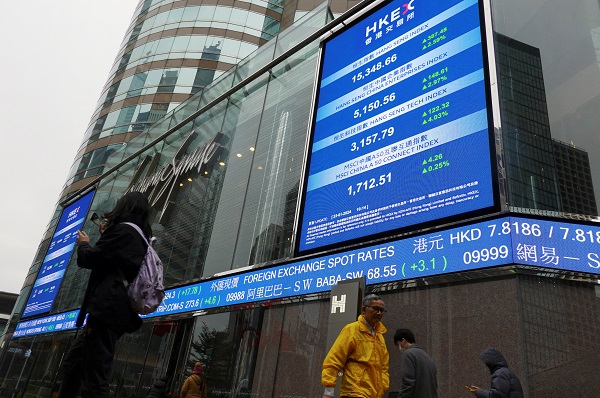
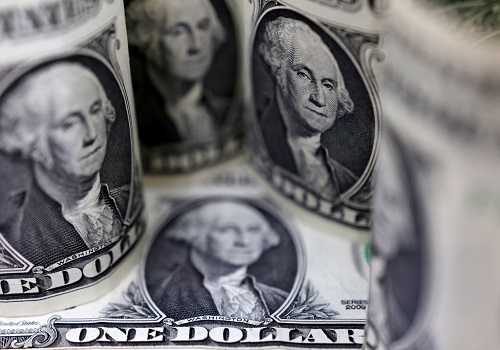
.jpg)
